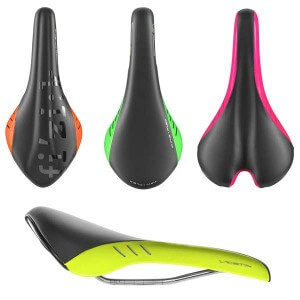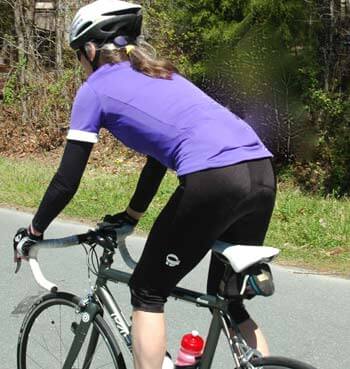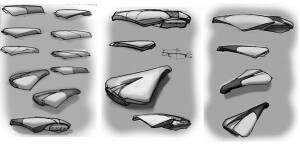Choosing the Right Bicycle Saddle
When choosing a bicycle saddle, there is such a myriad of choice; shape, material, padding etc. As such, it can often be very confusing when trying to decide which saddle best suits your cycling needs. If you do not choose a saddle that is well suited to your needs, you can not only compromise the comfort of your bottom, but also create postural injuries and possible alignment related injuries and inefficiencies. The following guidelines offer information on the vast range of bicycle saddles available, in an effort to help you specify what your cycling preferences are and thereby locating your perfect saddle.
 Shape
Shape
Choosing the optimum saddle shape to fit your body and suit your riding style is crucial. While riders who move around more on their saddle or prefer a wide range of hand positions may require a narrower or flatter saddle and riders who tend to stay more in one place or support more of their weight to the rear of the saddle with a more set riding position often prefer a wider and/or more contoured saddle. When choosing a saddle, it should support your sit bones but not your entire bottom. Where your sit bones make contact with your saddle is fundamental because your saddle must provide adequate support to these areas. Long term misalignment of your sit bones can create posture related injuries as well as contribute to stiffness and aches during and after riding which may later require chiropractic or physical therapy. To avoid developing these ailments, first make sure you are fit on your bike properly and pressure analyze various saddle shapes prior to purchase. Some manufacturers produce up to three different width saddles to suit a range of sizes variants and most offer multiple designs/models, so you can test out which shape is most compatible with your shape and cycling position.
 Materials and Rails
Materials and Rails
Another important factor when choosing your saddle is the material of which it is made. If weight and speed are important to you, aim for lightweight materials such as moulded carbon fibres. Bear in mind though that the lighter the material, the more you can expect to spend. If you favour comfort over speed, you may want to seek titanium rails which provide additional flex, absorbing a significant amount of the vibrations which pass through your bike’s frame and into the seat post. Similarly, leather saddles can provide comfort for longer rides. However, full leather saddles can require more maintenance than other saddles; you may need to break them in, the leather may require proofing and they can become damaged during wet weather. Alternatively, saddles made of synthetic leather are available and often offer additions such as Kevlar edges to prevent aging and natural wear and tear. Ultimately, when choosing your saddle material, deliberate upon your personal riding preferences, i.e. frequency & duration of rides, comfort vs. speed, and purchase accordingly.
Padding
The majority of saddles incorporate foam padding and or gel, however the amount, density and quality of padding can vary depending on your cycling prerequisites. For example, recreational cyclists or commuters often have deeper and softer padding for comfort, whereas racier saddles have less padding in order to reduce weight and increase speed capacity. Debate the extent to which you need padding and gel, as excess amounts can lead to chafing rather than support for people who ride regularly. Moreover, saddle foam padding often has a limited lifespan, becoming ineffective after it has been compressed due to too much use. Much like a running shoe, it is recommended you replace your padding when it no longer provides sufficient support, in order to promote good posture and adequate alignment for your sit bones.
Saddle Height and Bike Fit
One important element to note is, once you have purchased your saddle, you must ensure it is positioned to the correct height and at the optimum distance from your handlebars. You have spent the time deliberating over which saddle to buy, so it would be very unfortunate if it is not fitted properly! Often you can buy the perfect saddle, but if your riding position and posture while riding is not ideal, you won’t reap the benefits. For example, if you wriggle about on your saddle constantly, it may be that it is positioned too far backwards or forwards. Fortunately, you can have your saddle professionally set to your riding position from your bike fit upon purchasing it. A proper bike fit will enable professionals to assess your flexibility levels, cycling preferences and physical limitations in order to adequately position your saddle.
Author
This article was written by Bradley Taylor. Bradley is a freelance writer from Derby, England. He is a motoring enthusiast who loves writing about cars and everything automotive but he is versatile and also writes across a variety of other topics. You can stay connect with him on Google+ and follow his updates on Twitter.


